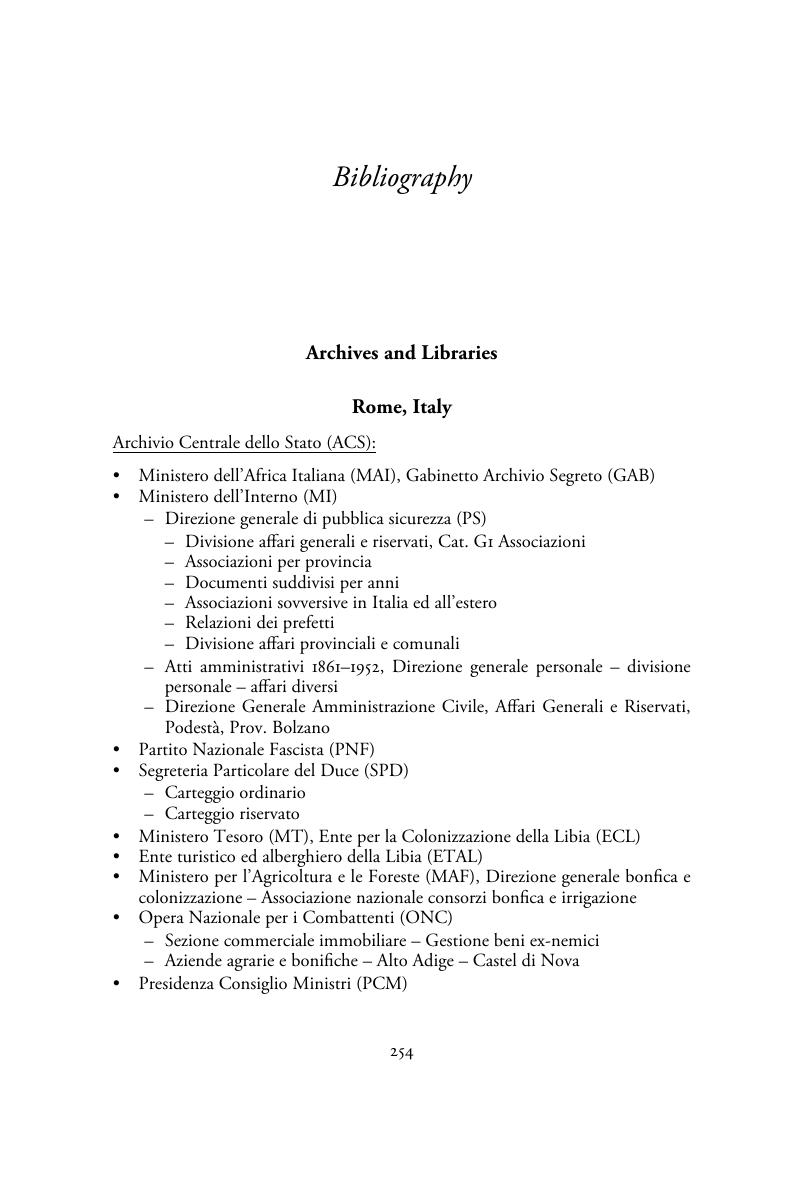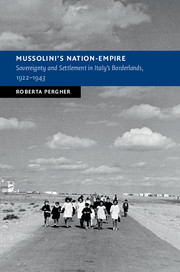Book contents
- Mussolini’s Nation-Empire
- New Studies in European History
- Mussolini’s Nation-Empire
- Copyright page
- Dedication
- Contents
- Maps
- Acknowledgments
- Introduction
- Chapter 1 The Boundaries of Sovereignty: Italian Rule in Contested Territories
- Chapter 2 Settlement and Sovereignty from the Alps to Africa
- Chapter 3 Divided by a Common Language: The Regime and the Settlers
- Chapter 4 Other Subjects, Other Citizens: The Regime and the Native Populations
- Chapter 5 “Inviolable” Borders: Land, People, and the Option Agreement between Nazi Germany and Fascist Italy
- Conclusion: Mussolini’s Nation-Empire
- Bibliography
- Index
- References
Bibliography
Published online by Cambridge University Press: 27 October 2017
- Mussolini’s Nation-Empire
- New Studies in European History
- Mussolini’s Nation-Empire
- Copyright page
- Dedication
- Contents
- Maps
- Acknowledgments
- Introduction
- Chapter 1 The Boundaries of Sovereignty: Italian Rule in Contested Territories
- Chapter 2 Settlement and Sovereignty from the Alps to Africa
- Chapter 3 Divided by a Common Language: The Regime and the Settlers
- Chapter 4 Other Subjects, Other Citizens: The Regime and the Native Populations
- Chapter 5 “Inviolable” Borders: Land, People, and the Option Agreement between Nazi Germany and Fascist Italy
- Conclusion: Mussolini’s Nation-Empire
- Bibliography
- Index
- References
Summary

- Type
- Chapter
- Information
- Mussolini's Nation-EmpireSovereignty and Settlement in Italy's Borderlands, 1922–1943, pp. 254 - 278Publisher: Cambridge University PressPrint publication year: 2017



